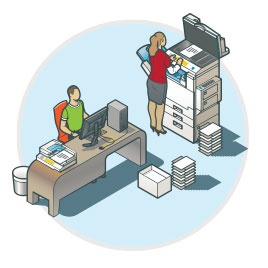
When considering how you get vital clinical data that arrives via “paper” (mail, fax, etc.) into the hands of providers quickly, people often say, “oh, we have scanning.” But what does that really mean?
Generally, “we have scanning” falls into 2 areas:
- We have scanning = we manually enter data and attach the file to the record: This usually means that mail, fax or even e-mailed PDF files arrive and someone (sometimes a dedicated person, sometimes the staff who sees the document first), sits in front of their EMR or other application, enters the pertinent clinical data, and then attaches the file to the record so that the provider can see any other information that was not entered.
- We have scanning = our documents are automatically routed and attached to records, but the clinical data is either manually inputted or not inputted at all. Often times, in this scenario, a sophisticated system can read enough information from the document to attach it to the correct patient record so that the provider can access the file, but the clinical data is not entered into fields to allow for a full patient history, trending or full reporting. The provider needs to rely on reading all current and past lab results and other reports to try to get a full picture of the patient. In some cases the data is manually inputted by the same staff mentioned above if this trend/historical analysis is required.
But in reality, there is now a 3rd type of “we have scanning” organization. It is one in which more than 80% of the clinical data fields from lab results and other reports sent from external organizations are captured automatically. The captured information is highly accurate and gives dedicated or clinical staff the ability to easily validate the values before being sent to the EMR or other systems.
In this scenario companies enjoy:
- Quick access to discrete lab results in the EMR or other database
- Significant reduction in data entry time
- Increased accuracy over manually entry as staff has easy tools to simply validate values instead of typing them in themselves
- Complete data being entered from lab results as all data and ranges can be automatically inputted instead of workers inputting only most important items due to time pressures – giving more complete data for better quality of care decisions
- Meeting Meaningful Use requirements for discrete lab results data
It is a system that can be used to enhance your current scanning system, if you have one, or to give you the routing and data entry capabilities that you never had.
So, you say you have “scanning”, but is it actually getting important clinical data to where it needs to be? Learn how Aurora Advanced Healthcare reduced the time and effort needed to get important clinical data from non-interfaced lab reports into their EMR so that providers could make the best possible decisions for their patients.